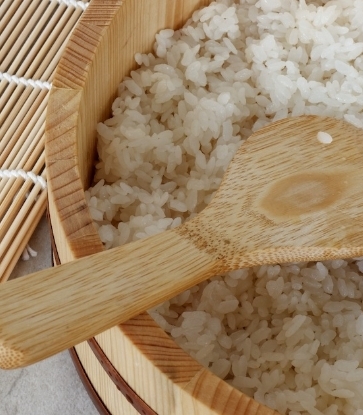
Yeast could be the closest thing to magic that we use in cooking. It was discovered five millennia back in ancient Egypt when the people then used it for making bread. It could be the earliest superfood ever as it contains lots of Vitamin B, wheat germ, wheat germ oil and different minerals.
Besides that, it’s believed that in every two teaspoons of yeast, there are nine grams of protein and zero cholesterol, fat and gluten, which makes it an ideal substitute of milk for vegans. The folate, zinc and selenium in yeast improve our immune and reproductive systems, and help our heart and brain run better. An experiment shows that marathon runners who consumed yeast before the race suffered less from fatigue and stress, and recovered more quickly.
How to drink: Add it to any cold drink. It works especially well with post-workout protein shake for additional protein and minerals. How does it taste? Since nutritional yeast is non-active, it doesn’t have any bitterness but rather a unique yoghurt flavour.

The seed power is still going strong. Chia seed continues to make appearances in different healthy drink recipes. But if you wish to double the impact, hemp seed is what you need in addition. While it’s less fibrous than chia seed, hemp seed has higher contents of fatty acid and protein.
The Omega-3 and Omega-6 fatty acids are the most beneficial to our heart. This tiny seed has even more to offer. It helps to lower blood pressure and the cholesterol level, facilitate circulatory system and metabolism and combat inflammation. Not only revered by Western doctors, the skin-healing effects of hemp seed are also noted in classic Chinese medicinal literature. The two seeds have similar sizes and are both flavourless. Together they form a formidable team.
How to drink: Put them on any milkshake, smoothie or juice. The seeds aren’t suitable for hot drinks.

Those who have tried maca coffee will remember its distinctive taste. It’s spicy in the beginning, followed by bitter notes and ends with mild sweetness. Grown on the hostile conditions of the South American highlands, its nutritional value truly reflects the plant’s resilience. Maca carries the moniker of “the South American ginseng” for good reason. It relieves fatigue caused by exercise, boosts the endurance of our muscles and our immune system. The root vegetable is also an anti-stress solution for Peruvians who use it to improve insomnia problems. On the other hand, thyroid illness patients, pregnant or breastfeeding women should consume maca with caution. The same goes to the people who react strongly towards natural stimulants like coffee, as they are more susceptible to conditions such as insomnia, palpitation and stomachache.
How to drink: Maca works on cold and hot drinks. As it has a pretty overwhelming taste, a small amount would suffice.

The edible flower trend is really blooming this year. As predicted by supermarket chain Whole Foods, all types of floral foods will move out of the garden onto our dining table. BBC also comments floral tea will give coffee a run for its money in the popularity contest.
Adding flower into beverages is an exhilarating aromatic experience. This year, elderflower and hibiscus are the go-to options. The former have long been employed by Europeans to fight flu. Regarding hibiscus, research shows that it is useful in decreasing blood pressure and improving our urinal system.
How to drink: As little as a petal could enrich the savour of the beverage.

Cardamom isn’t called the queen of spices for nothing. Don’t mistake it for nutmeg, for the two have a big difference in temperament and price. Nutmeg is intense and strong, while cardamom smells subtle and graceful, its spiciness intertwined with hints of lemon, citrus and mint. It’s vastly used in Indian and Middle Eastern cuisines to enhance the fragrance of various dishes and drinks, one of them being the reputed Indian milk tea.
Cardamom is related to ginger and has a similar warming property. According to Ayurveda, it cures indigestion. The medical faculty of King Saud University further proves the spice’s ability to reduce risks of heart and blood vessel diseases. The only group of people who should avoid cardamom is those with gallstones, as it is a source of biliary colic.
How to drink: Add less than a teaspoon of cardamom powder to hot drinks.

Once reserved exclusively for tea ceremonies, matcha has gone public for a while now, and its popularity is only going up. It opens up a new ground for desserts, as seen in ice cream and cakes. But the commercial potential doesn’t hurt its exquisite persona. The tea powder is still closely connected to its tradition, ground by natural stone equipment to release all its fragrance. Apart from its refreshing taste, nutrients are another element that draws people into matcha. A study of the University of Colorado shows matcha contains 137 times more antioxidants than regular green tea. Such content helps fight the free radicals in our body, achieving the effects of anti-inflammation and anti-aging.
How to drink: Put matcha powder into cold beverages or protein shake. If you’re making hot drinks with it, remember to not use water of high temperature.

Tasteless gelatin is widely found in gummy candy, pudding and jelly. But to be clear, this superfood isn’t vegetarian, since it’s produced using the bones and skin of pigs and cows. The theory that it reinforces our joints and keeps us from inflammation and pain sounds similar to the saying of Traditional Chinese Medicine that the animal organ we eat benefits the corresponding organ in our body. But it’s also backed by empirical research. The Australian Institute of Sport indicates that drinking 15 grams of gelatin before exercise could double the effect of collagen synthesis, restoring the wear to our tendon and ligament. Moreover, gelatin protects our gastrointestinal mucosa. But before you dive into it, make sure the product you buy is free of growth hormone and heavy metal substances like lead.
How to drink: General gelatin powder dissolves only in hot water, except for hydrolyzed gelatin powder which can be used in hot or cold drinks.
*As your body might not be used to these condiments, begin with a smaller amount in the first time.
This story was written by Derek Cheong and translated by Vincent Leung. Click here to read the original version of this story.





















